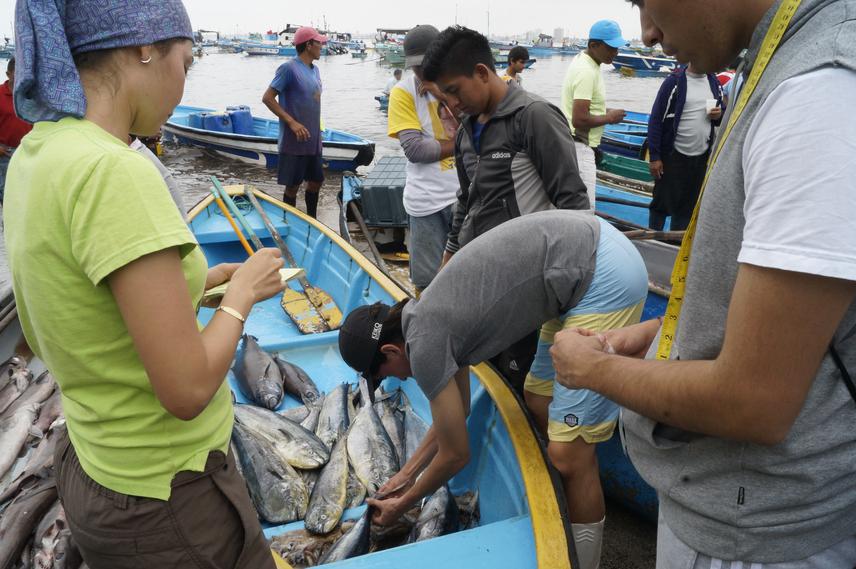Laia Muñoz Abril
Other projects
4 Nov 2015
Trophic Ecology and Connectivity of Yellow-Fin Tuna (Thunnus albacares) Between the Galapagos Marine Reserve and the Ecuadorian Mainland
22 Jun 2023
Identifying the Role of the Galapagos Marine Reserve in the Tunas Population from the Eastern Pacific Ocean
Understanding the origin of the deficit of heterozygotes in Ecuadorian tuna population and comparing the population of yellowfin tuna from Ecuador with individuals caught in places farther from Ecuador.

Fisheries act as agents of change in the ecosystem, as they offer the opportunity to understand how biological and ecological processes interact. The exploitation of a stock in each geographic area can produce changes not only in allele frequencies, which could generate two or more genetically different populations in the future. Assessing the status of a stock that is exploited provides actual information to be implemented in management plans thus preventing species from going extinct (Kunal et al.2013). Initially, it was thought that there was a single stock of yellowfin tuna migrating through the oceans.
Currently, management plans are based on the hypothesis of 4 stocks of yellowfin tuna in the world (International Seafood Sustainability Foundation 2016).However, the population structure of the yellowfin tuna worldwide is not yet understood (Percoraro et al.2016). Individuals from continental Ecuador and the Galápagos Marine Reserve (RMG) constitute a single population of yellowfin tuna according to our findings during our previous study funded by a Rufford Small Grant. However, a heterozygote deficit was found in this population which suggests that the population may be affected by forces that could be a consequence of fishing. Understanding the origin of this deficit of heterozygotes and comparing the population of yellowfin tuna from Ecuador with individuals caught in places farther from Ecuador mainland than the Galápagos (e.g.Mexico) will allow us to infer the number of stocks that exist in the Pacific region. Appleyard et al. (2001) found no population structure among individuals of yellowfin tuna in the Western Pacific; however, Aguila et al. (2015) found two subpopulations of yellowfin tuna in the Western and Central Pacific. The difference in the population structure of commercial species over time can result from fishing. The loss of genetic variation in a population can reduce productivity in populations that are commercially exploited.